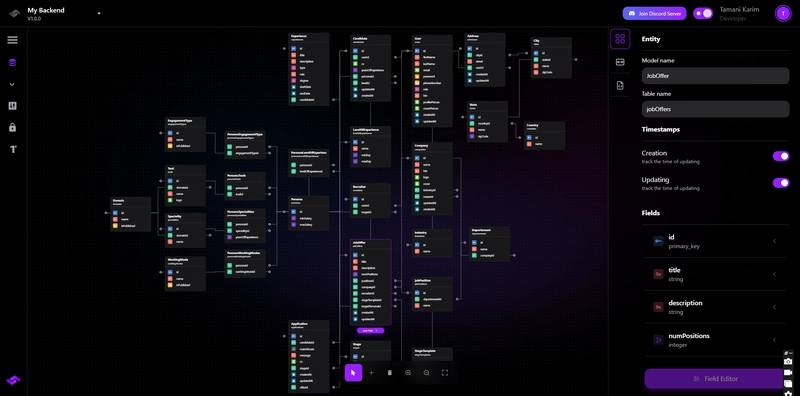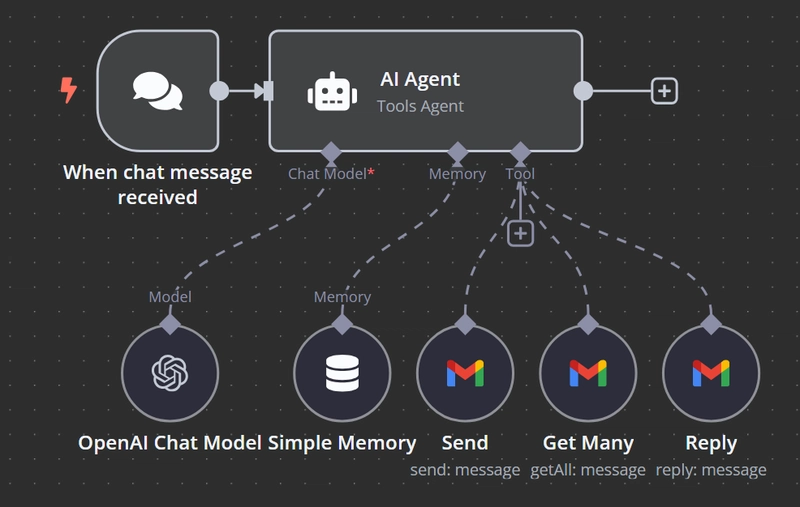Angular --### **Important Angular Interview Topics (With Explanation, Why & Where to Use in Projects)**
Important Angular Interview Topics (With Explanation, Why & Where to Use in Projects) If you're preparing for an Angular interview, focus on these core topics. Below is a detailed breakdown of key concepts, why they are important, and where they are used in real-world projects. 1. Components & Lifecycle Hooks What? Components are the building blocks of an Angular application. Lifecycle hooks (ngOnInit, ngOnChanges, ngAfterViewInit, etc.) allow you to tap into different phases of a component’s existence. Why? Helps manage component initialization, updates, and destruction effectively. Where Used? Fetching API data (ngOnInit). Reacting to input property changes (ngOnChanges). Handling DOM manipulations after view rendering (ngAfterViewInit). Example: export class MyComponent implements OnInit { ngOnInit() { console.log('Component initialized'); } } 2. Directives (ngIf, ngFor, Custom Directives) What? Structural directives (*ngIf, *ngFor, *ngSwitch) manipulate the DOM. Attribute directives ([ngClass], [ngStyle]) modify element behavior. Custom directives extend Angular functionality. Why? Helps dynamically render UI elements based on conditions and loops. Improves code reusability. Where Used? ngIf for conditionally displaying elements. ngFor to iterate over lists. Custom directives for reusable behaviors (e.g., adding tooltips, animations). Example: Welcome, User! {{ user.name }} 3. Services & Dependency Injection (DI) What? Services are used to share data and logic across components. Dependency Injection (DI) helps inject these services where needed. Why? Promotes code reusability and maintainability. Ensures single instances (Singleton pattern) of shared logic. Where Used? API calls (HttpClient in services). Managing user authentication, data sharing between components. Example: @Injectable({ providedIn: 'root' }) export class UserService { constructor(private http: HttpClient) {} getUsers() { return this.http.get('/api/users'); } } 4. Routing & Navigation (RouterModule) What? Handles navigation between pages without full page reload. Why? Enables SPA (Single Page Applications). Improves user experience. Where Used? Multi-page apps (e.g., e-commerce sites with Home, Product, Cart pages). Example: const routes: Routes = [ { path: 'home', component: HomeComponent }, { path: 'product/:id', component: ProductComponent } ]; @NgModule({ imports: [RouterModule.forRoot(routes)], exports: [RouterModule] }) export class AppRoutingModule {} 5. Forms (Template-driven & Reactive Forms) What? Template-driven forms use directives like ngModel. Reactive forms use FormControl, FormGroup, Validators. Why? Improves form validation and state management. Where Used? User login, registration, contact forms. Example (Reactive Form): this.userForm = new FormGroup({ name: new FormControl('', Validators.required), email: new FormControl('', [Validators.required, Validators.email]) }); 6. Observables & RxJS What? Observables (from, of, interval) handle asynchronous data. RxJS (map, filter, switchMap) helps manage complex async operations. Why? Used for API calls, event handling, real-time data streams. Where Used? Handling HTTP requests (HttpClient). Live search, WebSocket data streaming. Example: this.http.get('/api/data').pipe(map(data => console.log(data))).subscribe(); 7. State Management (NgRx, BehaviorSubject) What? NgRx uses Redux-like state management. BehaviorSubject allows reactive data sharing. Why? Avoids excessive API calls. Manages global application state efficiently. Where Used? Shopping cart data, authentication state. Example (Using BehaviorSubject for state sharing): private user = new BehaviorSubject(null); user$ = this.user.asObservable(); setUser(user: User) { this.user.next(user); } 8. Lazy Loading Modules What? Loads modules on demand instead of at startup. Why? Improves app performance by reducing initial load time. Where Used? Large applications with multiple feature modules. Example: const routes: Routes = [ { path: 'dashboard', loadChildren: () => import('./dashboard/dashboard.module').then(m => m.DashboardModule) } ]; 9. Interceptors & HTTP Handling What? Interceptors modify HTTP requests/responses globally. Why? Used for authentication tokens, logging, error handling. Where Used? Adding JWT tokens to API requests. Handling global error messages. Example: @Injectable() export class AuthInterceptor implements HttpInterceptor { intercept(req: HttpRequest, next: HttpHandler) { const clonedReq = req.clone({ setHeaders: { Authorization: `Bearer token` } }); return next.handle(clonedReq);

Important Angular Interview Topics (With Explanation, Why & Where to Use in Projects)
If you're preparing for an Angular interview, focus on these core topics. Below is a detailed breakdown of key concepts, why they are important, and where they are used in real-world projects.
1. Components & Lifecycle Hooks
What?
- Components are the building blocks of an Angular application.
- Lifecycle hooks (
ngOnInit,ngOnChanges,ngAfterViewInit, etc.) allow you to tap into different phases of a component’s existence.
Why?
- Helps manage component initialization, updates, and destruction effectively.
Where Used?
- Fetching API data (
ngOnInit). - Reacting to input property changes (
ngOnChanges). - Handling DOM manipulations after view rendering (
ngAfterViewInit).
Example:
export class MyComponent implements OnInit {
ngOnInit() {
console.log('Component initialized');
}
}
2. Directives (ngIf, ngFor, Custom Directives)
What?
- Structural directives (
*ngIf,*ngFor,*ngSwitch) manipulate the DOM. - Attribute directives (
[ngClass],[ngStyle]) modify element behavior. - Custom directives extend Angular functionality.
Why?
- Helps dynamically render UI elements based on conditions and loops.
- Improves code reusability.
Where Used?
-
ngIffor conditionally displaying elements. -
ngForto iterate over lists. - Custom directives for reusable behaviors (e.g., adding tooltips, animations).
Example:
*ngIf="isLoggedIn">Welcome, User!
*ngFor="let user of users">{{ user.name }}
3. Services & Dependency Injection (DI)
What?
- Services are used to share data and logic across components.
- Dependency Injection (DI) helps inject these services where needed.
Why?
- Promotes code reusability and maintainability.
- Ensures single instances (Singleton pattern) of shared logic.
Where Used?
- API calls (
HttpClientin services). - Managing user authentication, data sharing between components.
Example:
@Injectable({ providedIn: 'root' })
export class UserService {
constructor(private http: HttpClient) {}
getUsers() {
return this.http.get('/api/users');
}
}
4. Routing & Navigation (RouterModule)
What?
- Handles navigation between pages without full page reload.
Why?
- Enables SPA (Single Page Applications).
- Improves user experience.
Where Used?
- Multi-page apps (e.g., e-commerce sites with Home, Product, Cart pages).
Example:
const routes: Routes = [
{ path: 'home', component: HomeComponent },
{ path: 'product/:id', component: ProductComponent }
];
@NgModule({
imports: [RouterModule.forRoot(routes)],
exports: [RouterModule]
})
export class AppRoutingModule {}
5. Forms (Template-driven & Reactive Forms)
What?
- Template-driven forms use directives like
ngModel. - Reactive forms use
FormControl,FormGroup,Validators.
Why?
- Improves form validation and state management.
Where Used?
- User login, registration, contact forms.
Example (Reactive Form):
this.userForm = new FormGroup({
name: new FormControl('', Validators.required),
email: new FormControl('', [Validators.required, Validators.email])
});
6. Observables & RxJS
What?
- Observables (
from,of,interval) handle asynchronous data. - RxJS (
map,filter,switchMap) helps manage complex async operations.
Why?
- Used for API calls, event handling, real-time data streams.
Where Used?
- Handling HTTP requests (
HttpClient). - Live search, WebSocket data streaming.
Example:
this.http.get('/api/data').pipe(map(data => console.log(data))).subscribe();
7. State Management (NgRx, BehaviorSubject)
What?
- NgRx uses Redux-like state management.
-
BehaviorSubjectallows reactive data sharing.
Why?
- Avoids excessive API calls.
- Manages global application state efficiently.
Where Used?
- Shopping cart data, authentication state.
Example (Using BehaviorSubject for state sharing):
private user = new BehaviorSubject<User | null>(null);
user$ = this.user.asObservable();
setUser(user: User) {
this.user.next(user);
}
8. Lazy Loading Modules
What?
- Loads modules on demand instead of at startup.
Why?
- Improves app performance by reducing initial load time.
Where Used?
- Large applications with multiple feature modules.
Example:
const routes: Routes = [
{ path: 'dashboard', loadChildren: () => import('./dashboard/dashboard.module').then(m => m.DashboardModule) }
];
9. Interceptors & HTTP Handling
What?
- Interceptors modify HTTP requests/responses globally.
Why?
- Used for authentication tokens, logging, error handling.
Where Used?
- Adding JWT tokens to API requests.
- Handling global error messages.
Example:
@Injectable()
export class AuthInterceptor implements HttpInterceptor {
intercept(req: HttpRequest<any>, next: HttpHandler) {
const clonedReq = req.clone({ setHeaders: { Authorization: `Bearer token` } });
return next.handle(clonedReq);
}
}
10. Security Best Practices (XSS, CSRF, JWT, Sanitization)
What?
- Angular has built-in security mechanisms (DOM sanitization, CSP).
Why?
- Prevents XSS (Cross-Site Scripting) and CSRF (Cross-Site Request Forgery).
Where Used?
- Sanitizing user-generated content, securing API calls.
Example (Sanitization):
this.safeHTML = this.sanitizer.bypassSecurityTrustHtml(userInput);
Conclusion
| Topic | Why Important? | Where Used? |
|---|---|---|
| Components & Lifecycle Hooks | Manage component initialization & updates | UI components, API calls |
Directives (ngIf, ngFor) |
Dynamic UI manipulation | Looping lists, conditional rendering |
| Services & Dependency Injection | Reuse logic, inject dependencies | API calls, global state management |
| Routing & Navigation | Page navigation | Multi-page apps, authentication |
| Forms (Reactive & Template-driven) | User input handling | Login, Registration, Contact forms |
| Observables & RxJS | Handle async operations | API calls, live search |
| State Management (NgRx, BehaviorSubject) | Manage global app state | Shopping cart, user authentication |
| Lazy Loading Modules | Optimize app performance | Large applications |
| Interceptors & HTTP Handling | Modify API requests globally | JWT authentication, logging |
| Security (XSS, CSRF, JWT) | Protect from attacks | API security, user-generated content |












































































































































































![[The AI Show Episode 142]: ChatGPT’s New Image Generator, Studio Ghibli Craze and Backlash, Gemini 2.5, OpenAI Academy, 4o Updates, Vibe Marketing & xAI Acquires X](https://www.marketingaiinstitute.com/hubfs/ep%20142%20cover.png)


























































































































![[FREE EBOOKS] The Kubernetes Bible, The Ultimate Linux Shell Scripting Guide & Four More Best Selling Titles](https://www.javacodegeeks.com/wp-content/uploads/2012/12/jcg-logo.jpg)



![From drop-out to software architect with Jason Lengstorf [Podcast #167]](https://cdn.hashnode.com/res/hashnode/image/upload/v1743796461357/f3d19cd7-e6f5-4d7c-8bfc-eb974bc8da68.png?#)







































































































.png?#)





.jpg?#)






























_Christophe_Coat_Alamy.jpg?#)







































































































![Rapidus in Talks With Apple as It Accelerates Toward 2nm Chip Production [Report]](https://www.iclarified.com/images/news/96937/96937/96937-640.jpg)









































































































































